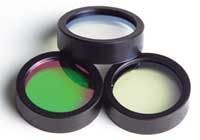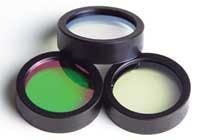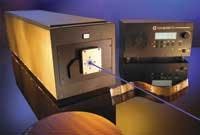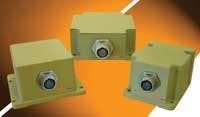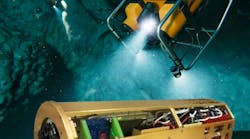Marines look to Trijicon for optical rifle sights
U.S. Marine Corps leaders are asking Trijicon Inc. in Wixom, Mich., to build optical sights for the M-16 combat assault rifle. Trijicon will provide 104,000 of the company’s Rifle Combat Optics (RCO) fixed four-power scopes under terms of a $660 million contract awarded Aug. 12 from the Marine Corps Systems Command at Quantico Marine Corps Base, Va. The RCO enhances the Marine’s ability to identify and engage targets in combat situations at greater ranges and with increased accuracy over standard iron sights, Marine Corps experts say. The Trijicon TA31RCO is a slightly modified version of the company’s TA31F 4x Advanced Combat Optical Gunsight (ACOG). The sight will be mounted to the Marine Corps M16A2 and M16A4 rifles, as well as the M4A1 carbine, to help Marines identify and fire on targets from as far away as half a mile. The sight has Trijicon’s dual-illuminated red chevron-shaped reticle and bullet drop compensator. In low light or at night, the chevron is illuminated by tritium, company officials say. In daylight, a fiber-optic system collects ambient light and helps ensure daytime brightness and controlled contrast. The system does not require a battery. Work on the new sights will be in Wixom, Mich., and Fredericksburg Va., and will be finished in August 2010. For more information contact Trijicon online at www.trijicon.com.
High-performance laser-line bandpass filters
Edmund Optics in Barrington, N.J., is offering high-performance laser-line filters fabricated using a hard ion-beam sputter technology. The filters achieve better than 90 percent transmission at the design laser wavelength. These filters are for laser-based fluorescence instrumentation, Raman spectroscopy, and analytical and medical laser systems. Designed to offer the maximum transmission of stimulated emission these filters eliminate eliminating noisy spontaneous emission. For more information contact Edmund Optics online at www.edmundoptics.com.
Navy F/A-18 jet strike fighter tows fiber-optic decoy
BAE Systems and the U.S. Navy finished developmental testing of the AN/ALE-55 Fiber Optic Towed Decoy (FOTD) on the Navy’s F/A-18 E/F Super Hornet. During the flight tests, conducted at Naval Air Station Patuxent River, Md., the FOTD flew more than 60 times to test its endurance and reliability under simulated combat maneuvers. The Integrated Defensive Electronic Countermeasures (IDECM) Block 3 program, which includes the AN/ALE-55 FOTD, now begins formal development and operational testing. A contract award for the Low Rate Initial Production of the ALE-55 is planned for early 2006. Contract award for Full Rate Production is expected to follow the successful completion of Operational Evaluation. The BAE Systems’ ALE-55 FOTD is an integral component of the joint Navy-Air Force IDECM Radio Frequency Countermeasures (RFCM) system. It includes a high-power FOTD and deployment canister. Currently, the ALE-55 is slated for deployment on the F/A-18E/F aircraft. For more information, see www.eis.na.baesystems.com.
20-watt UV laser for microelectronics applications
Coherent Inc. in Santa Clara, Calif., is offering the AVIA 355-20 solid-state Q-switched laser, which yields 20 watts of 355-nanometer ultraviolet output at 100 kHz. The AVIA 355-20 can be operated at pulse repetition rates as fast as 150 kHz, while maintaining beam characteristics and low-noise performance. The combination of high power and high pulse rate translates into higher processing speeds for micromachining applications, such as wafer dicing, via drilling, processing low-k dielectrics, large-area solar-cell scribing, and chip singulation. The AVIA 355-20 is a frequency-tripled vanadate laser that uses a proprietary end-pumped architecture to deliver a high-quality beam with high efficiency over a long lifetime. The resonator is packaged in one sealed module, in which all the optics are rigidly soldered. The laser’s pump diodes are mounted inside the laser head, and fiber-coupled into the sealed resonator. For more information contact Coherent online at www.Coherent.com.
FOG-based rate-sensor assembly is more durable
Curtiss-Wright Controls Embedded Computing in Leesburg, Va., is offering a fiber-optic-gyro (FOG)-based rate sensor assembly for military applications that require platform positioning, stabilized pointing, or gun and turret stabilization. Because the new rate sensor assembly (RSA) has no moving parts it is significantly more durable than the failure-prone mechanical gyroscope assemblies it is designed to replace. The RSA is based on a single-axis FOG architecture that weighs less than 1.5 pounds, meets MIL-STD-810E guidelines for resistance to vibration, shock, and acceleration, and offers a mean time between failures of more than 50,000 hours. The RSA is a form, fit, and function replacement for existing mechanical or other FOGs. The RSA is for applications such as signal intelligence vehicles, weapons training simulators, and stabilization systems for naval radar and missile defense systems. For more information contact Curtiss-Wright Embedded Computing Controls online at www.cwcembedded.com.
JDS Uniphase closes acquisition of Acterna
JDS Uniphase Corp. in San Jose, Calif., in August completed its acquisition of Acterna Inc. for about $450 million in cash and 200 million shares of JDS Uniphase common stock. Acterna provides broadband and optical test and measurement solutions. The acquisition doubles the size of JDS Uniphase’s addressable communications market to more than $5 billion, and expands the company’s product portfolio to enhance the deployment of Internet Protocol (IP)-based data, voice and video services over optical long haul, metro, fiber-to-the-home, DSL and cable networks. JDS Uniphase provides broadband test & measurement solutions and optical products for communications, commercial and consumer markets, and offers components, modules, and subsystems for optical communication, display, security, medical/environmental instrumentation, decorative, aerospace, and defense applications. For more information see www.jdsu.com.
